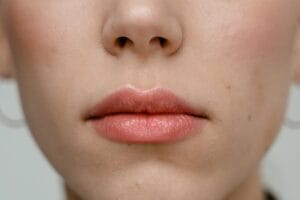Rhinoplasty Recovery Tips: Expert Guide to Healing
Here’s what most people don’t realize about rhinoplasty recovery tips: the first 48 hours are critical, but so is every day for the next year. The healing process isn’t linear, and what you do (or don’t do) during those initial weeks can dramatically impact your final results. Whether you’re preparing for surgery or already in the thick of recovery, understanding the nuances of rhinoplasty healing can make all the difference.
Sarah woke up the morning after her rhinoplasty feeling like she’d been in a boxing match. Her face was swollen, her nose was packed, and she couldn’t breathe through her nostrils. That’s when the real work began—not the surgery itself, but the recovery that would determine whether she’d love her new nose or spend months regretting the decision.
What to Expect During Rhinoplasty Recovery
Rhinoplasty recovery typically follows this timeline: Days 1-7 involve significant swelling, bruising, and discomfort with splints/bandages in place. Weeks 2-4 show gradual improvement as swelling decreases and most visible bruising fades. Months 2-6 involve continued subtle swelling reduction, with final results becoming apparent around 12 months. Key recovery tips include keeping your head elevated, avoiding strenuous activity, following your surgeon’s care instructions precisely, and maintaining realistic expectations about the healing timeline.
The First 48 Hours: Setting the Foundation for Recovery
Those initial two days post-surgery? They’re make-or-break. Your body is in full healing mode, and how you support it now determines everything that follows.
In my practice, I’ve observed that patients who nail the first 48 hours tend to have smoother recoveries overall. That’s not coincidence—it’s biology. During this window, your body is establishing the foundation for healing. Swelling peaks around day two or three, which is why you’ll look worse before you look better. But here’s the thing: proper care during these critical hours can minimize that peak swelling significantly.
Managing Pain and Discomfort
Let’s talk about pain management, because this is where many people get tripped up. The discomfort after rhinoplasty isn’t usually excruciating—most patients describe it as pressure and congestion rather than sharp pain. But it’s persistent, and that can wear you down.
Your surgeon will prescribe pain medication, and here’s what you need to know: take it as directed, but don’t wait until you’re miserable. Stay ahead of the pain curve, especially during those first 24-48 hours. Icing helps tremendously, but there’s a technique to it. Apply cold packs to your cheeks and around your eyes—never directly on your nose—for 15-20 minutes at a time, with breaks in between. Too much cold can actually impede circulation, which slows healing.
Sleeping elevated is non-negotiable. Prop yourself up with multiple pillows or use a wedge pillow to keep your head above your heart. This reduces swelling by allowing fluid to drain away from your face. Some patients find it uncomfortable at first, but your body adjusts quickly. The catch? You’ll need to maintain this elevation for at least two weeks, even when you’re feeling better.
Rhinoplasty Recovery Tips: Breathing and Nasal Care
You won’t be breathing through your nose initially—that’s normal. Your nostrils might be packed with gauze, or you might have internal splints. Either way, you’ll be a mouth-breather temporarily. Keep a water bottle nearby because your mouth will get dry, and stay hydrated.
When your surgeon removes the packing (usually around day 3-5), you’ll get your first real look at your new nose. Don’t panic if it looks swollen or different than expected. That’s not your final result—not even close. The internal structures are still settling, and swelling masks the true shape.
Weeks 1-2: The Critical Healing Window
This is when most of the visible healing happens, and it’s also when patients tend to get impatient. Here’s what’s actually going on beneath the surface.
During the first week, your body is working overtime. Blood vessels are repairing, tissues are regenerating, and your immune system is managing inflammation. The external splint comes off around day 7-10, which feels like a milestone—and it is. But that doesn’t mean you’re done being careful.
Rhinoplasty Recovery Tips: Activity Restrictions and What They Really Mean
Your surgeon will tell you to avoid strenuous activity, but what does that actually mean? Here’s the breakdown:
- No bending over: This increases blood pressure in your head, which can cause bleeding or worsen swelling. If you drop something, squat down instead of bending.
- No lifting: Nothing heavier than 10 pounds for at least two weeks. That includes groceries, pets, and children. Increased blood pressure from lifting can disrupt healing.
- No exercise: Walking is fine—actually encouraged for circulation. But no running, weightlifting, or anything that raises your heart rate significantly for 3-4 weeks minimum.
- No blowing your nose: This one’s tough, especially if you’re congested. But blowing can disrupt delicate healing tissues and cause bleeding. Use saline sprays instead to keep things moist.
These restrictions exist for a reason. I’ve seen patients who felt great by day 5 and decided to “test” their limits. The result? Increased swelling that lasted weeks longer than necessary, or in worst cases, complications that required additional care.
Rhinoplasty Recovery Tips: Managing Swelling and Bruising
Bruising is usually worst around days 3-5, then gradually fades. The colors can be dramatic—purple, green, yellow—but that’s normal. Arnica gel or tablets might help speed the process, though research is mixed. What definitely helps: gentle massage around the eyes (not on the nose) once your surgeon clears you, usually after the first week.
Swelling is trickier because it lingers. The majority of visible swelling resolves in the first month, but subtle swelling can persist for months. That’s why your nose might look different from day to day, or even hour to hour, during early recovery. This is frustrating but normal.
Some patients find that reducing sodium intake helps minimize swelling. It’s not a magic bullet, but it can make a difference. Stay hydrated—paradoxically, drinking plenty of water helps your body flush excess fluid. Avoid alcohol for at least two weeks, as it increases inflammation and can interfere with medications.
Weeks 3-6: The Transition Phase
By now, you’re probably feeling more like yourself. Most visible bruising is gone, swelling has decreased significantly, and you can breathe through your nose again. But you’re not out of the woods yet.
This is when patients often get complacent, which is understandable—you feel better, so you assume you’re healed. But internal healing is still happening. The bones are stabilizing, cartilage is settling, and scar tissue is forming and remodeling. Being too aggressive too soon can disrupt this delicate process.
Returning to Normal Activities
Most people can return to work after 1-2 weeks, depending on their job. If you work a desk job and can avoid heavy lifting, you might be back sooner. Physical jobs require more time—usually 3-4 weeks minimum.
Exercise can gradually resume, but start slow. Walking is fine from day one. Light jogging might be okay by week 3-4, but check with your surgeon. Contact sports? Wait at least 6-8 weeks, and even then, be cautious. Your nose is still vulnerable to trauma.
Flying is usually safe after 2-3 weeks, but again, confirm with your surgeon. The pressure changes can affect healing, and you want to be past the point where complications are likely.
What You’re Seeing vs. What’s Real
Here’s where things get interesting: your nose will continue changing for months. The shape you see at week 4 isn’t your final result. Swelling can make your nose look wider, the tip can appear more bulbous, and asymmetry might be more noticeable than it will be later.
This is psychologically challenging. You’ve invested time, money, and discomfort into this process, and you want to see results now. But patience is genuinely part of the process. Most surgeons will tell you that 60-70% of swelling resolves in the first month, but the remaining 30-40% takes 6-12 months to fully disappear.
That said, if something looks genuinely wrong—severe asymmetry, obvious deformities, or changes that concern you—don’t hesitate to contact your surgeon. There’s a difference between normal healing variations and actual problems that need attention.
Months 2-6: The Long Game
This is when the real transformation happens, slowly and subtly. Most people won’t notice the day-to-day changes, but if you compare photos from month 2 to month 6, the difference is usually significant.
During this phase, scar tissue is maturing and softening. Internal structures are settling into their final positions. The skin is adapting to the new underlying framework. All of this happens gradually, which is why you might not notice it happening.
Rhinoplasty Recovery Tips: Continued Care and Monitoring
You’ll have follow-up appointments with your surgeon during this period—usually at 1 month, 3 months, and 6 months post-op. These aren’t just check-ins; they’re opportunities to address any concerns and ensure healing is progressing normally.
Some patients develop small bumps or irregularities during healing. Often, these resolve on their own as swelling decreases. Sometimes, gentle massage can help. In rare cases, minor revisions might be needed, but that’s typically discussed after the one-year mark when healing is complete.
Sun protection becomes crucial during this phase. Your nose is more sensitive to UV damage while healing, and sun exposure can cause permanent discoloration or worsen scarring. Use a broad-spectrum sunscreen with SPF 30+ whenever you’re outside, and consider wearing a hat for extra protection.
Managing Expectations
This is perhaps the most important aspect of rhinoplasty recovery that doesn’t get enough attention. Your final results won’t be visible until 12-18 months post-surgery. That’s a long time to wait, and it requires mental preparation.
Many patients experience what I call “recovery anxiety”—worrying that something is wrong because their nose doesn’t look perfect immediately. But perfection isn’t the goal, and immediate results aren’t realistic. The goal is improvement that looks natural and suits your face.
If you’re struggling with the emotional side of recovery, you’re not alone. Consider joining support groups or forums where others share their experiences. Sometimes, just knowing that what you’re experiencing is normal can provide significant relief.
Common Complications and When to Worry
Most rhinoplasty recoveries are straightforward, but complications can happen. Knowing what’s normal versus what requires immediate attention can save you stress—and potentially prevent serious issues.
Normal vs. Concerning Symptoms
Some symptoms that seem alarming are actually normal:
- Numbness: Temporary numbness in the tip or sides of your nose is common and usually resolves within months.
- Asymmetry: Minor asymmetry during healing is normal due to uneven swelling. It usually evens out.
- Nasal congestion: Ongoing stuffiness for weeks or even months is typical as internal tissues heal.
- Changes in smell/taste: Temporary alterations are common and typically resolve.
But some symptoms require immediate medical attention:
- Excessive bleeding: Some oozing is normal, but if you’re soaking through bandages quickly or blood is flowing steadily, contact your surgeon immediately.
- Signs of infection: Increasing redness, warmth, pus, fever, or worsening pain could indicate infection.
- Difficulty breathing: If breathing becomes significantly more difficult (beyond expected congestion), seek help.
- Severe pain: Pain that’s worsening rather than improving, or that doesn’t respond to medication, needs evaluation.
When in doubt, call your surgeon’s office. They’d rather answer a question than deal with a preventable complication.
Nutrition and Lifestyle Factors
What you eat and how you live during recovery can influence healing more than most people realize. This isn’t about perfection—it’s about giving your body the resources it needs.
Rhinoplasty Recovery Tips: Foods That Support Healing
Protein is crucial for tissue repair, so make sure you’re getting enough. Lean meats, fish, eggs, legumes, and dairy products all provide the building blocks your body needs. Vitamin C supports collagen production, so include citrus fruits, berries, and vegetables in your diet.
Zinc plays a role in wound healing—you’ll find it in nuts, seeds, and whole grains. Stay hydrated with water, not just caffeinated beverages. And while it’s tempting to reach for comfort foods, try to maintain a balanced diet. Your body is doing hard work, and it needs proper fuel.
Some patients find that certain foods increase swelling—typically high-sodium processed foods. Pay attention to how your body responds, and adjust accordingly.
Rhinoplasty Recovery Tips: Sleep and Rest
Sleep is when your body does its most intensive healing. Prioritize getting enough rest, even when you start feeling better. Your immune system needs downtime to function optimally, and healing requires significant energy.
If sleeping elevated is disrupting your rest, try different pillow configurations. Some patients find that a travel neck pillow helps support their head while keeping it elevated. The key is finding what works for you while maintaining that elevation.
Final Thoughts: Patience and Perspective
Rhinoplasty recovery isn’t a sprint—it’s a marathon with checkpoints along the way. The process requires patience, realistic expectations, and trust in your surgeon’s expertise. Most importantly, it requires understanding that healing takes time.
If you’re in the early stages of recovery, focus on following your surgeon’s instructions precisely. If you’re considering rhinoplasty, use this information to prepare yourself mentally and practically. And if you’re months into recovery and still seeing changes, know that’s completely normal.
The best rhinoplasty recovery tips aren’t complicated—they’re about supporting your body’s natural healing process, managing expectations, and staying in communication with your surgical team. Your nose will continue evolving for up to a year, and that’s not a flaw in the process—it’s how healing works.
Remember: you’ve made an investment in yourself. Give that investment the time and care it deserves. The results will be worth the wait.














Post Comment